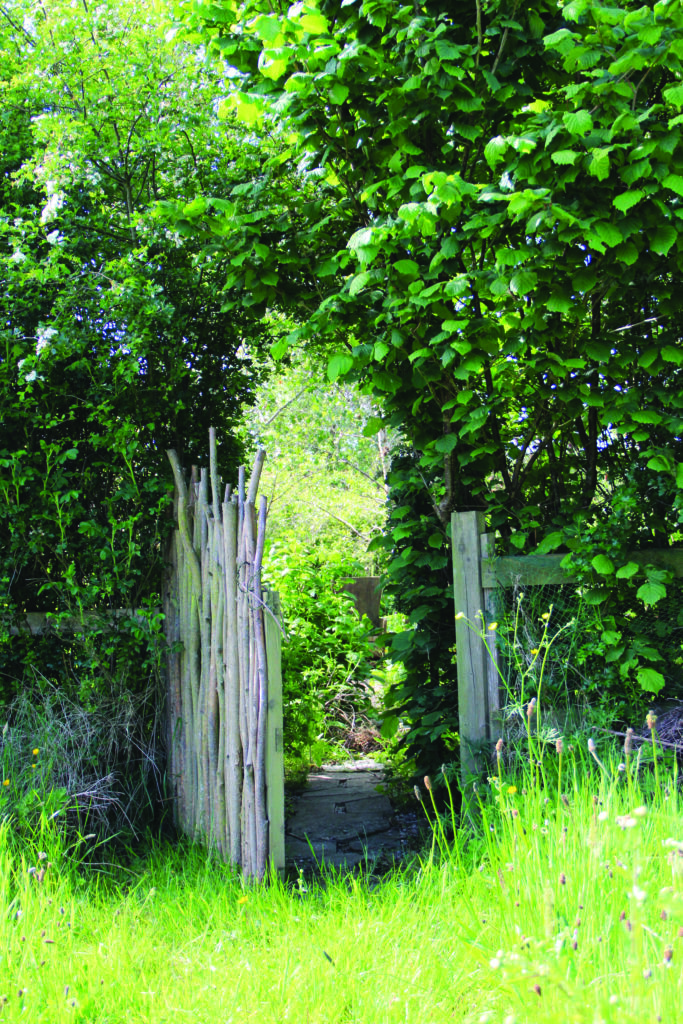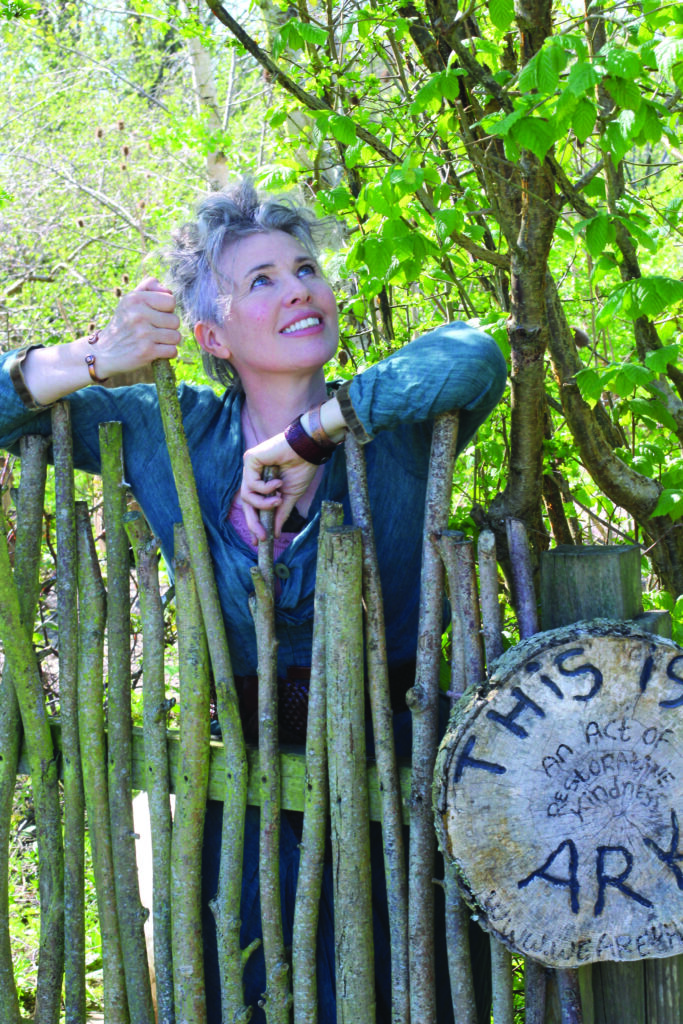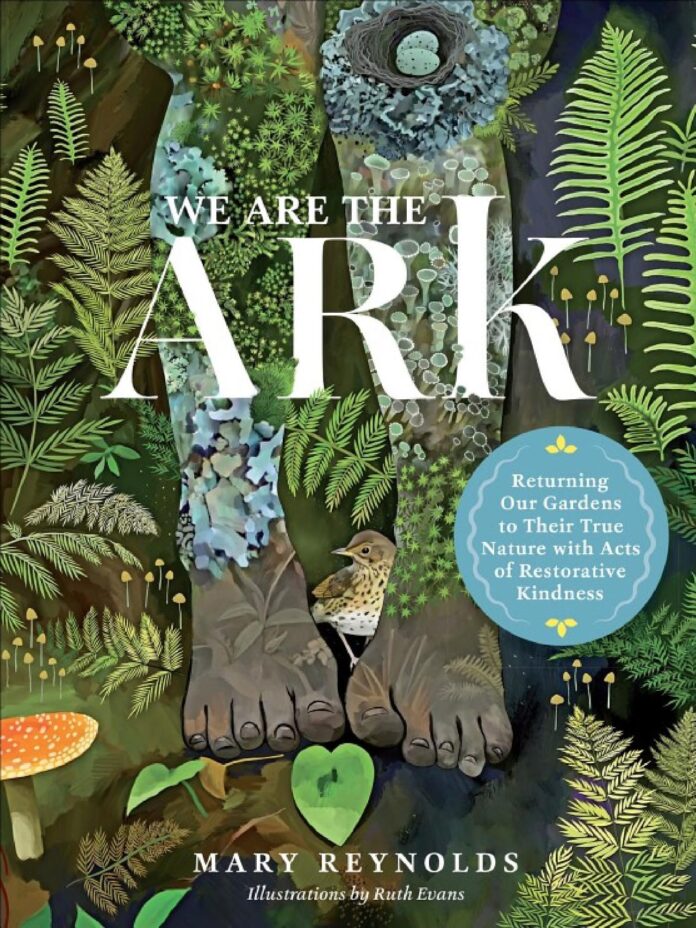It’s time for horticulture leaders to step up and embrace the industry changes that biodiversity loss and the climate crisis make ever more pressing.
Often when people think of gardening, they think of being in nature. Yet gardens and nature have little to do with each other anymore. Gardens no longer truly fit under the heading ‘natural’. They are outdoor rooms, with the emphasis on the room. Still-life paintings full of non-native plants, solely made for our convenience and visual pleasure. There is not much consideration for the web of life that depends on native plants and insect communities for its survival.
The garden industry is still a humancentric activity. It is part of an old world that has already collapsed behind a confusing and dangerous screen of greenwashing. Recycling plastic and getting an electric version of a car or a machine is not going to save the world. These are lateral moves that really only serve to support industry, not nature.
Yet the fact is that increasing numbers of people are hungry for real, solid ways to be of help in the climate and biodiversity crises we are in. Currently, horticulture in Ireland is not meeting this growing market demand. It is way behind the zeitgeist. The positive in this is that there are huge opportunities waiting to be harvested in terms of getting ahead of the crowd to offer much wanted alternatives to the old paradigm picture, in which horticulture is destructive rather than supportive towards nature.

THE PROBLEM
Ireland used to be 80 per cent covered with native diverse woodlands, and the rest was a varied tapestry of wetlands and other important habitats. As a result of habitat destruction, we are now faced with the collapse of nature in Ireland and beyond. Already we are dealing with a massively depleted version of the community of plants, insects and other creatures that live alongside us in a delicate dance; a dance that demands the health and abundance of every creature, seen and unseen.
Currently gardening is one of the most destructive industries around. There are many examples of this destructiveness, such as the continued and persistent use of glyphosate and other killing chemicals, and the importation of plants from abroad, along with the plant diseases that are set to wipe out more of our native trees. (Have we learned nothing from the elm and ash loss?)
Let’s focus on a particular example of gardening harm that blows my mind. One of the main reasons for the collapse of nature in Ireland (indeed all over the world) is the spread of non-native invasive species through the globalisation of the plant industry. This involves moving plants out of their native plant communities and importing them for the purpose of creative garden design.
This global hobby of non-native plant collections (AKA gardening) has seen highly successful imported plants escaping our gardens and running rampant through our island.
Japanese knotweed, Rhododendron ponticum and cherry laurel – to name a few – are steadily destroying Ireland’s remaining natural habitats. The National Parks & Wildlife Service (NPWS) has stated that rhododendron and cherry laurel are “the greatest threat to our remaining native woodlands.” Yet they are still sold in garden centres. Cherry laurel is the hedge of choice in most landscapers’ arsenal of plants.
While it’s not listed as an invasive species on the European Communities Regulations (2011), cherry laurel is classified as invasive by the National Biodiversity Data Centre. It should be illegal to sell or plant cherry laurel in Ireland.
As a nation we have been colonised for centuries. The latest wave is these non-native plants, which are causing a collapse of our remaining wild places. Were this spread of invasive plants to keep going unchecked, even if humans get wiped out, nature would not recover, as the whole of Ireland would end up being colonised completely by these plants, wiping out everything else that has evolved within the local food web. All life on earth is completely dependent upon native plant communities.
Only 2 per cent of our woodlands are native, the worst case in Europe. Currently 90 per cent of Ireland’s internationally important habitats have emergency status; yet the vast majority of our Special Areas of Conservation have no conservation plans.
LEADING THE WAY TO SOLUTIONS
In every ending there is a chance of a new beginning. All of us that are part of the horticulture industry are in a position where we could become leaders in the drive to re-establish a different kind of relationship with the web of life.
Currently, it is impossible to get a decent selection of native Irish plants other than a few shrubs and trees. Native grasses, wild herbs, ferns, freshwater plants and native perennials are impossible to find. In the US, native plant nurseries are a booming business, while over here we are lagging behind, still stuck in the old ways and not offering alternatives.
“They can go somewhere else,” I often hear people say about the wild creatures and plants that their activities are displacing. But there is nowhere else. Farming has no room for wildlife habitat; monoculture forestry does not shelter or feed wild creatures. Our gardens could be their only hope.
We have not yet embraced the huge opportunity that gardens could be. They could be the front line of individual action against the destruction of the natural world. This is something that people are calling out for. We cannot control industrial agriculture, fishing or forestry, but we can control the little patches of land that people charge us with managing and designing. All the destruction is local to someone and so the solutions must be local to all of us.
I feel there is a huge opportunity to build ARKs instead of gardens. ARKs are ‘Acts of Restorative Kindness to the Earth’. They are patches of hope in a patchwork quilt that the ARK as a movement is weaving around the globe.
People often ask me, how can one individual help save the planet? What I always answer is, “If you want to save the planet, then start with your own patch of it.” These small actions turn hopelessness into hope and gardeners into powerful caretakers of their little pieces of earth.
We have a real opportunity to change our industry, person by person, patch by patch. To become guardians instead of gardeners. To work with our clients to grow chemical-free food gardens and restore native plant communities; to create wildlife supportive additions like ponds, dry stone walls, dead hedges, hedgehog highways, native fungi, native window box ARKs . . . the opportunities are endless. And the steps we must take require only a small shift of intention.
We are out of time, nature is leaving us. We can’t survive without her. We have to step up and become re-weavers of the web of life.
Us gardeners could drive the change that we so urgently need. ✽
 A nature activist and reformed landscape designer, Mary Reynolds is the author of The Garden Awakening: Designs to Nurture our Land & Ourselves and We Are the ARK: Returning Our Gardens to Their True Nature with Acts of Restorative Kindness. She writes a weekly wildlife gardening column in the RTE Guide, and is founder of the movement, www.wearetheark.org.
A nature activist and reformed landscape designer, Mary Reynolds is the author of The Garden Awakening: Designs to Nurture our Land & Ourselves and We Are the ARK: Returning Our Gardens to Their True Nature with Acts of Restorative Kindness. She writes a weekly wildlife gardening column in the RTE Guide, and is founder of the movement, www.wearetheark.org.
HOW TO BUILD AN ARK: AN ACT OF RESTORATIVE KINDNESS TO THE EARTH
1. Give at least half of your garden or land back to nature. If not half, as much as you can manage. Grow as much of your own organic food as possible in the other half. Protect and guide your ARK to re-wild through nature’s natural processes and it will become a more and more complex ecosystem over time. All land is welcome; even a window box full of local soil is great, as it allows native weed seeds to flourish, providing food and reproductive partners for insects.
2. Put up a sign saying “THIS IS AN ARK – www. wearetheark.org ”. This simple action removes the shame that people feel about having a messy garden, and replaces it with pride that you’re doing something important to help all the creatures we are supposed to share the planet with. The website is set up to explain to interested neighbours what is happening there on your ARK, and why it is necessary.
3. Remove any non-native ‘invasive plants’. This is difficult on a large scale, but on our individual patches of earth, we can manage it easily enough by hand and through borrowed grazers or heavy sheet mulching. These plants do not move at 100MPH. In our own small ARKs, we try to work without chemicals, which often cause many more problems than they solve and are very destructive to life on all levels.
4. Step in and provide any ecosystem services that may be required due to the absence of the full circle of life. The aim is to create as many different habitats as possible in the land you have, habitats that would normally be created by keystone species which are missing from our island ARKs. This develops as diverse an ecosystem as possible on your patch. If you have the space, consider creating multiple habitats such as an ARK meadow, a bare earth bank, piles of deadwood, a wildlife pond, a scrubby thorny thicket, a mature native woodland, a dry-stone wall etc.
5. Native plants are the foundation stone to any ecosystem. ARKs are based on the native plants in your part of the world, wherever you may be. After careful observation of your ARK, if your soil is damaged or devoid of growth, the weed seed bank may be absent. In that case, sow a wildflower meadow to reboot the system and slowly introduce as many native plants as possible. Only use locally sourced native organic seeds, cuttings and plants (if possible) as these are vital genetic material for the local insect populations and have not been grown with poisons. Building your ARK involves careful mimicking of nature’s natural processes.
6. Make holes in your boundaries to allow wildlife to pass through. Learn to share your patches of this earth.
7. The blue and white toned outdoor lighting which is now in standard use is one of the major factors in biodiversity collapse. Please aim for darkness, or make sure all your ARK lights are red in tone (which has much less adverse effect on wildlife), and not upward pointing. Make sure any necessary outdoor lights are motion-sensor, so that they only come on for short times when you need them, allowing darkness to prevail in between.
8. Get together with like-minded folk and approach your councils and homeowner associations, your schools and university campuses and ask for support to turn more and more park and public land into ARKs.
9. Please mark your ARK on our website’s map of ARKS (www.wearetheark.org/map-of-arks) so that we can work towards connecting the dots with wildlife corridors in our future vision for this movement.
10. If you have more than enough land to grow your own food, then share it with friends, family and neighbours who don’t have any land to grow food. If you have no land yourself, approach a local older person, and ask whether they would consider letting you turn their garden into an ARK, in return for a share of the produce you grow in the food half. In return, they also get company and the joy of watching wildlife return to their land.
11. At the end of the day, don’t lose hope. We cannot wait for our political leaders to save us, they are caught in a web of their own weaving. It is up to us. All the greatest changes in the world have come from the bottom up, from small groups of people shifting consciousness at ground level. If you want to save the planet, start with your own patch of it. Patch by patch we will restore our true nature. Hope is the harvest.
12. For more information on why and how to build an ARK, visit www.wearetheark.org, and read my book, We Are the ARK: Returning Our Gardens to Their True Nature Through Acts of Restorative Kindness. Further inspiration at www.irishforestgarden.ie, the source of the photos in this article.







